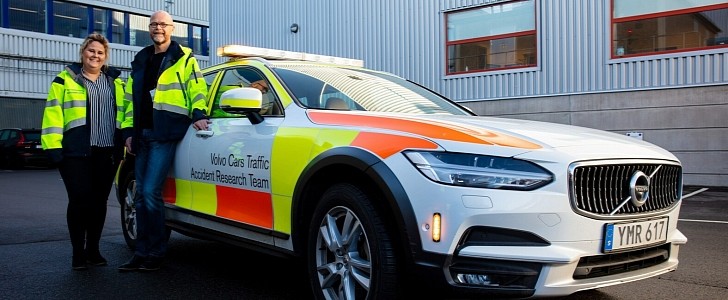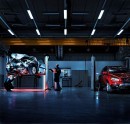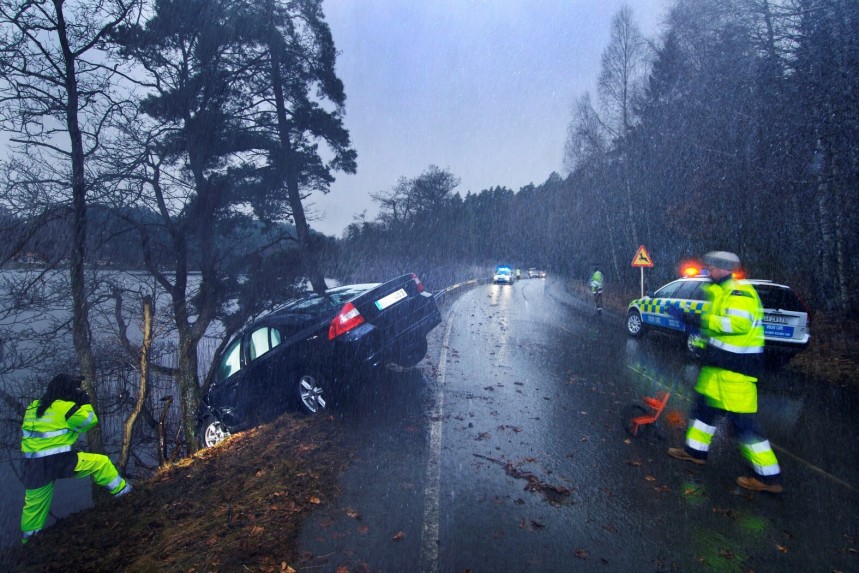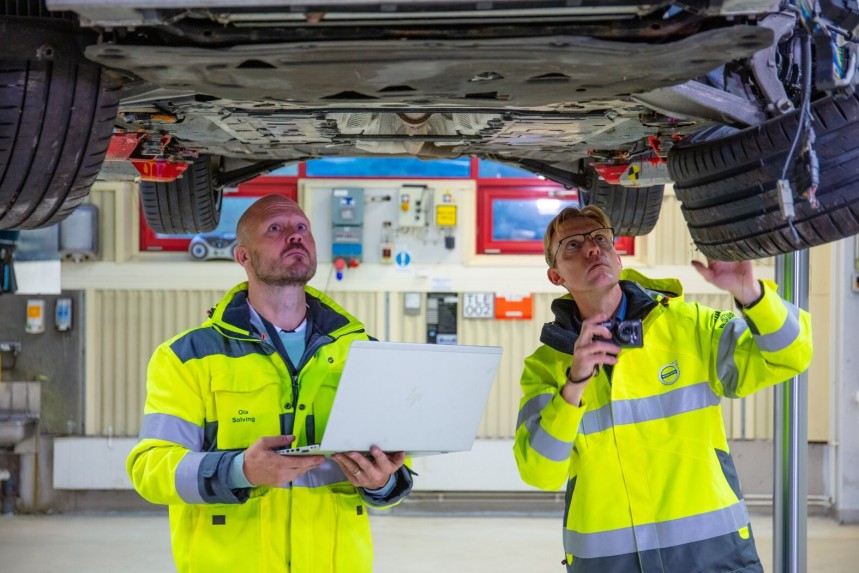The Swedish manufacturer has made a name for itself by offering some of the safest cars on the market while pioneering innovative features. They study real-life incidents extensively and even established a special accident research team to help investigate them.
Volvo was established in 1927, and through the years has built a reputation for offering reliable and safe vehicles, being at the forefront of safety engineering.
After studying close to 28,000 accidents in Sweden, one of their engineers, Nils Bohlin, invented and patented the modern three-point seat belt in the late ‘50s, which became standard on all Volvo models by 1959. The patent was made available for free to all manufacturers in the interest of increasing safety across the industry.
Additionally, Volvo was the first manufacturer to develop a rear-facing child seat in 1964 and introduced a booster seat in 1978.
These innovations were made possible by extensively studying road accidents, and at the forefront of these studies is the in-house detectives that form Volvo’s Accident Research Team.
It was established fifty years ago to research truck and car accidents in Sweden. Its story starts just after Nils Bohlin patented the three-point belt, when a comprehensive study on reducing injuries was conducted. Starting with 1966, the Swedes started focusing on all accidents in the country that involved a Volvo over one year. The study suggested that the use of the new seatbelt reduced injuries by 50%.
Realizing that this kind of study provides invaluable input for increasing the safety of their products, in 1970 a decision was made to set up an internal research team that would permanently study the causes and effects of accidents.
Comprehensive studies of individual accidents are conducted by the team. They provide critical insights about the complex mechanisms and software involved in different types of crashes and about the resulting injuries and their severity.
The team based in Goteborg arrives at the scene of an accident involving a Volvo that occurs within a 100-km (62 miles) radius, regardless of the day, time, or weather conditions.
At least one member of the team is present at the scene, depending on the complexity of the accident, and if it is possible the police postpone moving the vehicles until a technician arrives.
This allows the team to study the vehicles, the extent of the occupants’ injuries, take measurements and photos and. if the police permit it, interview those who witnessed the crash.
After the area is cleared and the authorities approve it, the vehicle is transported to a workshop or a Volvo Safety Center for further analysis.
Here researchers with different backgrounds, ranging from design to medical experts, analyze the vehicle’s components such as chassis, reinforcements, body panels, and electronics.
This information gathered from the accident site and Safety Center is coded and depersonalized. The conclusions drawn from the investigation are shared with the product development team, who use it to improve existing designs or develop new ways of increasing the safety of occupants.
Every year the team is sent to investigate about 45 accidents in person but are also able to gather vital information about accidents that occur in other places with the help of a global network of Volvo personnel.
Moreover, various statistics are being gathered from other sources, such as public accident databases, to gain the knowledge required to calculate the probability of a certain type of accident occurring and help develop active safety features that will work on any road, all over the world.
Thanks to the brilliant people that have been working tirelessly for the last fifty years, Volvo vehicles and the entire automotive industry will continue to offer an increased level of safety that saves countless lives daily.
After studying close to 28,000 accidents in Sweden, one of their engineers, Nils Bohlin, invented and patented the modern three-point seat belt in the late ‘50s, which became standard on all Volvo models by 1959. The patent was made available for free to all manufacturers in the interest of increasing safety across the industry.
Additionally, Volvo was the first manufacturer to develop a rear-facing child seat in 1964 and introduced a booster seat in 1978.
These innovations were made possible by extensively studying road accidents, and at the forefront of these studies is the in-house detectives that form Volvo’s Accident Research Team.
It was established fifty years ago to research truck and car accidents in Sweden. Its story starts just after Nils Bohlin patented the three-point belt, when a comprehensive study on reducing injuries was conducted. Starting with 1966, the Swedes started focusing on all accidents in the country that involved a Volvo over one year. The study suggested that the use of the new seatbelt reduced injuries by 50%.
Comprehensive studies of individual accidents are conducted by the team. They provide critical insights about the complex mechanisms and software involved in different types of crashes and about the resulting injuries and their severity.
The team based in Goteborg arrives at the scene of an accident involving a Volvo that occurs within a 100-km (62 miles) radius, regardless of the day, time, or weather conditions.
At least one member of the team is present at the scene, depending on the complexity of the accident, and if it is possible the police postpone moving the vehicles until a technician arrives.
This allows the team to study the vehicles, the extent of the occupants’ injuries, take measurements and photos and. if the police permit it, interview those who witnessed the crash.
After the area is cleared and the authorities approve it, the vehicle is transported to a workshop or a Volvo Safety Center for further analysis.
This information gathered from the accident site and Safety Center is coded and depersonalized. The conclusions drawn from the investigation are shared with the product development team, who use it to improve existing designs or develop new ways of increasing the safety of occupants.
Every year the team is sent to investigate about 45 accidents in person but are also able to gather vital information about accidents that occur in other places with the help of a global network of Volvo personnel.
Moreover, various statistics are being gathered from other sources, such as public accident databases, to gain the knowledge required to calculate the probability of a certain type of accident occurring and help develop active safety features that will work on any road, all over the world.
Thanks to the brilliant people that have been working tirelessly for the last fifty years, Volvo vehicles and the entire automotive industry will continue to offer an increased level of safety that saves countless lives daily.









